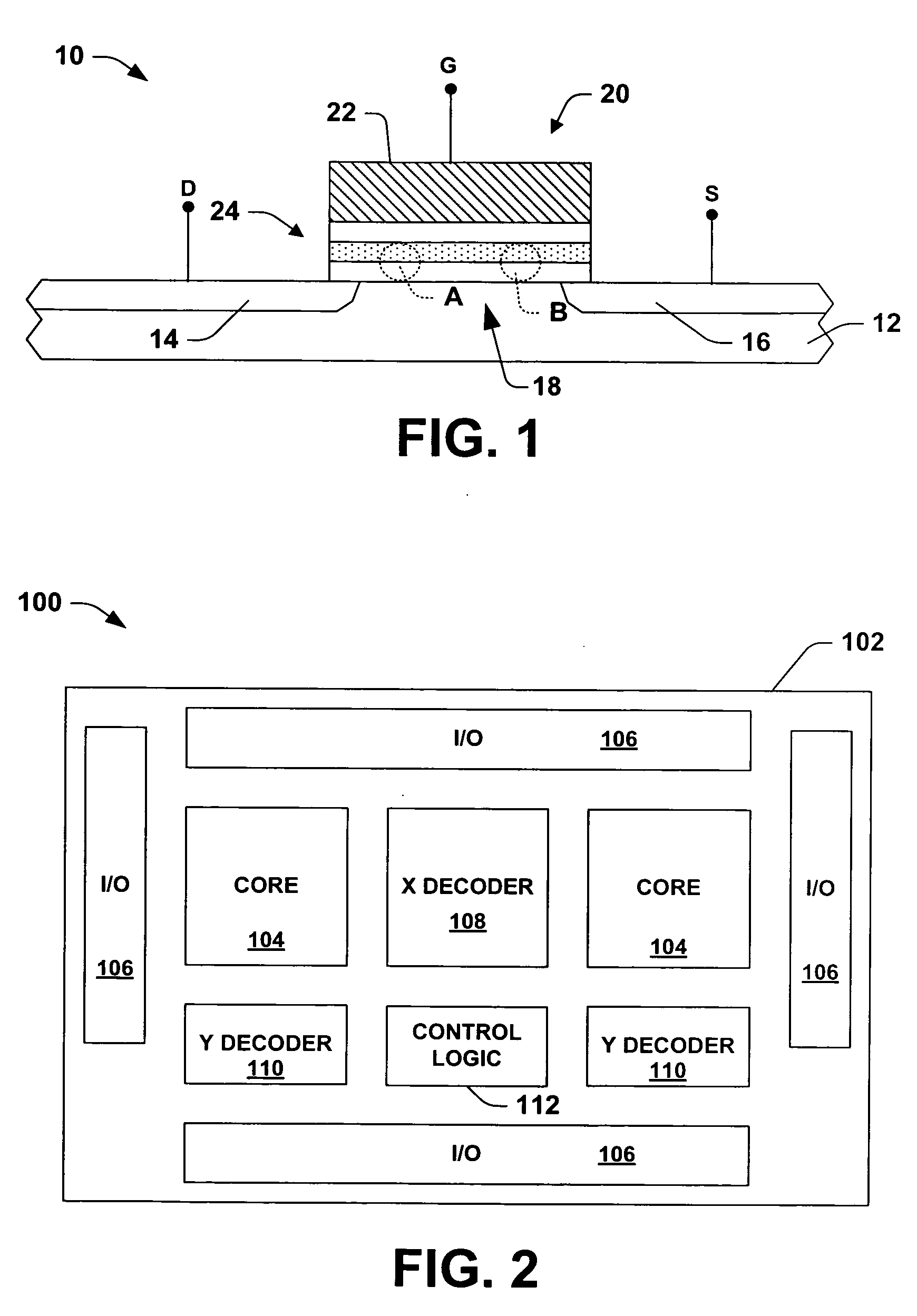Methods and systems for high write performance in multi-bit flash memory devices
a multi-bit flash memory and write speed technology, applied in the field of memory devices, can solve the problems of limiting the use of flash memory devices in applications requiring high-speed programming, the speed at which flash memory is programmed is somewhat limited, etc., and achieves the effect of positive impact on write speed, fast programming, and fast programming
- Summary
- Abstract
- Description
- Claims
- Application Information
AI Technical Summary
Benefits of technology
Problems solved by technology
Method used
Image
Examples
Embodiment Construction
[0036] One or more implementations of the present invention will now be described with reference to the drawings, wherein like reference numerals are used to refer to like elements throughout. One or more aspects of the invention are hereinafter illustrated and described in the context of an exemplary dual-bit flash memory device in which conductive doped polysilicon word lines are formed above a charge trapping layer to create flash memory cells in combination with diffused bit line portions (e.g., source / drains) in an underlying silicon semiconductor body, with the cells organized along rows (e.g., word lines) and columns (e.g., bit lines) in a virtual ground array. However, the invention is not limited to the illustrated implementations and may alternatively be employed in connection with any specific type of substrate materials (e.g., silicon wafer, SOI wafer, epitaxial layer, etc.), any type of dual-bit flash memory cell structure, and any array configuration (e.g., NOR, virtua...
PUM
 Login to View More
Login to View More Abstract
Description
Claims
Application Information
 Login to View More
Login to View More - R&D
- Intellectual Property
- Life Sciences
- Materials
- Tech Scout
- Unparalleled Data Quality
- Higher Quality Content
- 60% Fewer Hallucinations
Browse by: Latest US Patents, China's latest patents, Technical Efficacy Thesaurus, Application Domain, Technology Topic, Popular Technical Reports.
© 2025 PatSnap. All rights reserved.Legal|Privacy policy|Modern Slavery Act Transparency Statement|Sitemap|About US| Contact US: help@patsnap.com



